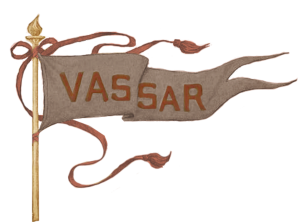Global Nineteenth-Century Studies Program
A Study of Quaker Samplers Found in the The Frances Lehman Loeb Art Center Collection
Nineteenth-century arts extended beyond the male-dominated public sphere of galleries and critics, entering the “feminine” private sector through textiles. Women would often embroider, crochet and more to create ornamentation for their homes, and to entertain themselves thereby creating a demand...
A Study of Quaker Samplers Found in the The Frances Lehman Loeb Art Center Collection
Nineteenth-century arts extended beyond the male-dominated public sphere of galleries and critics, entering the “feminine” private sector through textiles. Women would often embroider, crochet and more to create ornamentation for their homes, and to entertain themselves thereby creating a demand...
Duelling and the Fantasmatic Spectre of Male Honour in Imperial Germany: The Kaiser’s Will and Theodor Fontane’s Effi Briest
Underneath the historiographical disagreements about military honor and dueling in Imperial Germany there lurks a consensus that most duelists simply internalized the dictates of honor. This article troubles that presumption by attending to the Prussian-German military honor code’s mixed messages...
The Captain of Köpenick and the Uniform Fantasies of German Militarism
This article examines a famous 1906 event that occurred when a con man dressed in a captain's uniform commandeered two small contingents of soldiers in Berlin and took them to nearby Köpenick, where he proceeded to arrest the city’s mayor...
The Emperor’s New Uniforms: The Uniform Fantasies of Wilhelm II and His Critics
In light of Wilhelm II’s well-known predilection for military uniforms and displays, many of his contemporaries regarded him as a real-life version of the titular figure in Hans Christian Andersen’s fable “The Emperor’s New Clothes.” This essay uses the concept...

